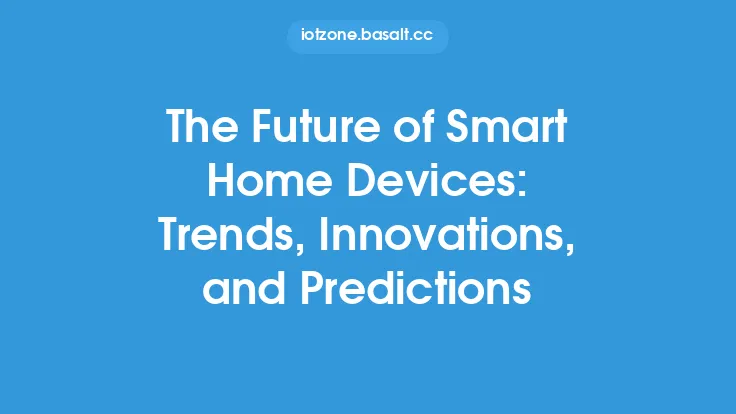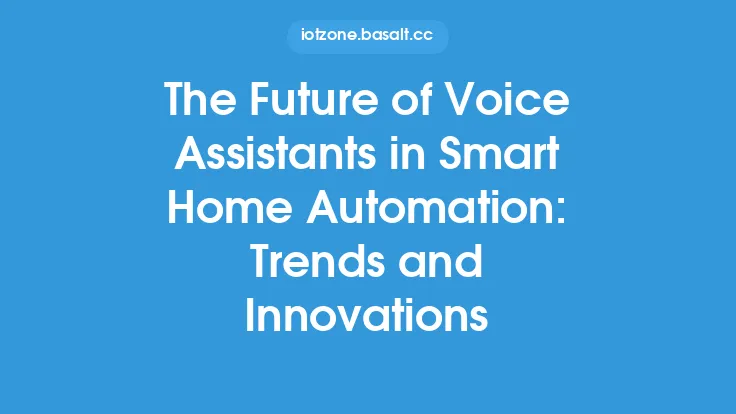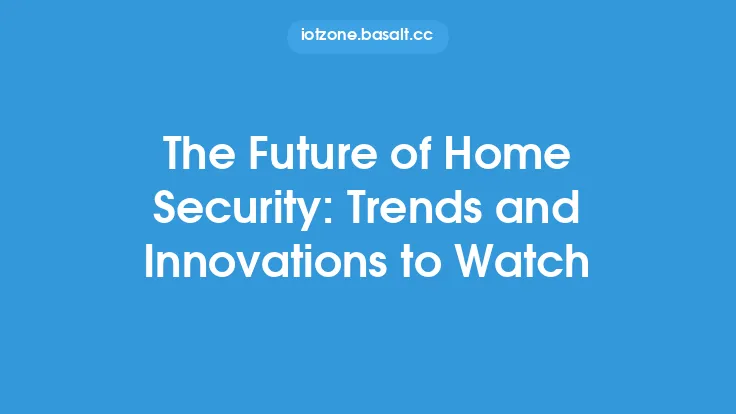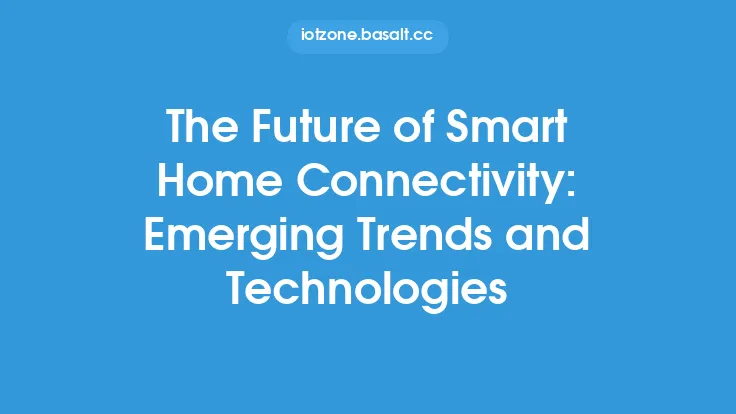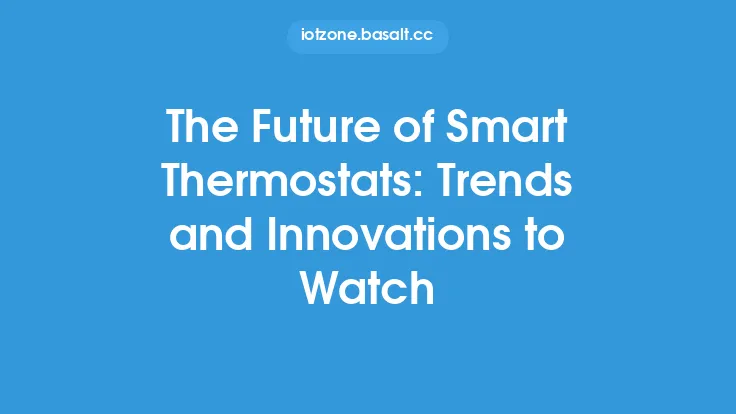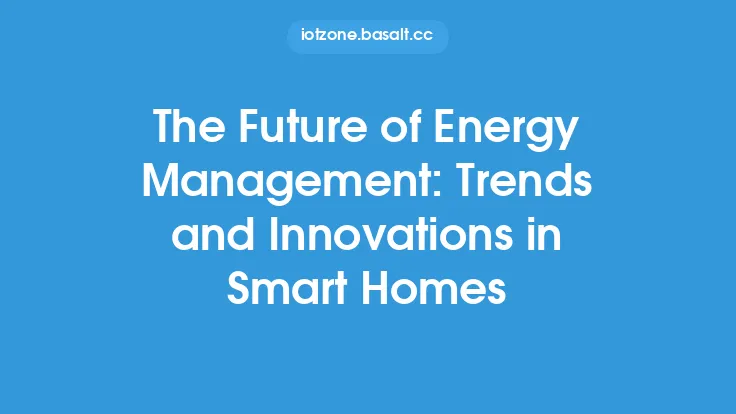The concept of home automation has been around for several decades, but it's only in recent years that the technology has advanced to the point where it's become a mainstream phenomenon. Home automation systems, also known as smart home systems, use a combination of hardware and software to control and monitor various aspects of a home, such as lighting, temperature, security, and entertainment. As the technology continues to evolve, we can expect to see significant advancements in the field, leading to more efficient, convenient, and sustainable living spaces.
Current State of Home Automation Systems
Home automation systems have come a long way since their inception. Today, we have a wide range of systems to choose from, each with its own set of features and capabilities. Some of the most popular home automation systems include smart thermostats, smart lighting systems, security cameras, and voice assistants. These systems can be controlled remotely using smartphones, tablets, or voice commands, making it easy to manage and monitor a home from anywhere. The current state of home automation systems is characterized by a high degree of fragmentation, with multiple protocols and standards being used. This can make it difficult for consumers to choose the right system for their needs, and for manufacturers to develop compatible products.
Emerging Trends in Home Automation
Several emerging trends are expected to shape the future of home automation systems. One of the most significant trends is the increasing use of artificial intelligence (AI) and machine learning (ML) in home automation. AI and ML can be used to analyze data from various sensors and devices, and make predictions about a homeowner's behavior and preferences. This can enable more efficient and personalized control of home automation systems. Another trend is the growing importance of voice assistants, such as Amazon Alexa and Google Assistant. These voice assistants can be used to control a wide range of devices, and are becoming increasingly popular as a means of interacting with home automation systems.
Innovations in Home Automation Technology
Several innovations are driving the advancement of home automation technology. One of the most significant innovations is the development of the Internet of Things (IoT) protocol. The IoT protocol enables devices to communicate with each other and with the cloud, making it possible to control and monitor devices remotely. Another innovation is the use of wireless communication protocols, such as Zigbee and Z-Wave. These protocols enable devices to communicate with each other without the need for wires, making it easier to install and maintain home automation systems. The development of more advanced sensors and devices is also driving innovation in home automation. For example, sensors can now detect a wide range of parameters, including temperature, humidity, and air quality.
Predictions for the Future of Home Automation
Based on current trends and innovations, several predictions can be made about the future of home automation. One prediction is that home automation systems will become more integrated and seamless. As the technology advances, we can expect to see more devices and systems working together to create a more cohesive and convenient living experience. Another prediction is that home automation systems will become more focused on energy efficiency and sustainability. As concern about climate change and energy consumption grows, home automation systems will play an increasingly important role in reducing energy waste and promoting sustainable living. Finally, we can expect to see more emphasis on security and privacy in home automation systems. As more devices become connected to the internet, the risk of hacking and data breaches increases. Therefore, manufacturers will need to prioritize security and privacy in the development of home automation systems.
Impact of Home Automation on Society
The impact of home automation on society will be significant. One of the most significant impacts will be on energy consumption. Home automation systems can help reduce energy waste by optimizing heating and cooling, and by turning off lights and devices when not in use. This can lead to significant reductions in energy consumption, and help mitigate the effects of climate change. Home automation systems can also have a significant impact on the elderly and disabled. For example, voice assistants can be used to control devices, making it easier for people with mobility issues to manage their living space. Finally, home automation systems can have a significant impact on the economy. As the technology advances, we can expect to see new industries and job opportunities emerge, related to the development and installation of home automation systems.
Challenges and Limitations of Home Automation
Despite the many benefits of home automation, there are several challenges and limitations that need to be addressed. One of the most significant challenges is the issue of compatibility. As mentioned earlier, the current state of home automation systems is characterized by a high degree of fragmentation, making it difficult for consumers to choose the right system for their needs. Another challenge is the issue of security. As more devices become connected to the internet, the risk of hacking and data breaches increases. Therefore, manufacturers will need to prioritize security and privacy in the development of home automation systems. Finally, there is the issue of cost. Home automation systems can be expensive, making them inaccessible to many consumers. Therefore, manufacturers will need to develop more affordable solutions, without compromising on quality and functionality.
Conclusion
In conclusion, the future of home automation systems is exciting and full of possibilities. As the technology continues to evolve, we can expect to see significant advancements in the field, leading to more efficient, convenient, and sustainable living spaces. The emerging trends, innovations, and predictions outlined in this article will shape the future of home automation, and have a significant impact on society. However, there are also challenges and limitations that need to be addressed, such as compatibility, security, and cost. By understanding these challenges and limitations, manufacturers and consumers can work together to create a more seamless, integrated, and sustainable home automation experience.
